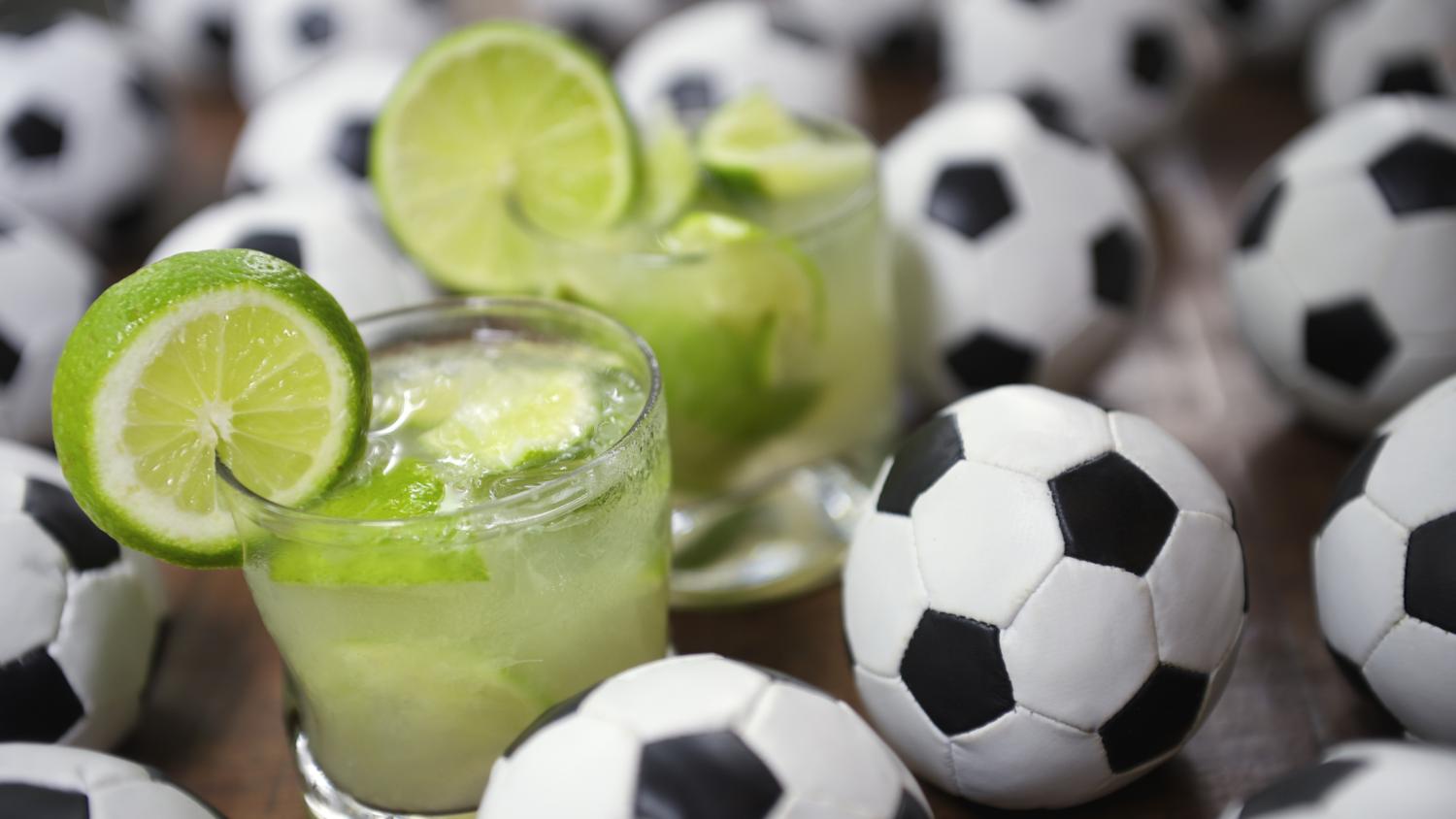Booze and soccer go together like wine and cheese, beer and nachos or rum and coke. The only thing that brings people together more than booze is the World Cup. So we thought it would be a great idea to compile the best World Cup cocktails for each nation competing in this summer’s tournament.
The 2018 World Cup will feature 32 teams so we’ve got about 32 World Cup cocktails for you, give or take. We added one for the U.S. because we’re still in denial and two for Russia because they’re hosting the dang thing. But some countries are just known for drinks that don’t lend themselves to cocktails. So for teams like Germany, you should probably prepare to just drink beer because it would be weird not to and we don’t want things to be weird, do we?
One suggestion for all of these cocktails is to use the best ingredients possible. If a recipe calls for tequila and lime juice, using Patron and fresh-squeezed juice will taste better than Jose Cuervo and juice from a plastic bottle shaped like a lime. That said, not everyone has the time (or money) to make everything in the ideal manner, so do what works best for you.
For viewers in the Western Hemisphere, this summer’s tournament will have some early kickoffs. Many matches will start at 8 a.m. on the East Coast — that’s a 5 a.m. kickoff out west. So make sure to go to bed early so your body doesn’t hate you for drinking these World Cup cocktails in the morning.
Oh, and don’t be a dick; please drink responsibly.
World Cup Cocktails
Russia
As host of the tournament, we’re giving Russia two cocktails. Everyone knows Russia is synonymous to vodka. With all due respect to countries like Sweden and Poland, Americans love a good Russian vodka (or Tito’s because everything’s better in Texas).
Russia will limit alcohol sales in the host cities surrounding matches, so we’re sure the locals will stock up on plenty of vodka ahead of time so they can be properly prepared for watching their national team flail around the pitch. They should also make these World Cup cocktails, though it should be noted neither concoction is actually Russian in origin.
White Russian
- 1 oz coffee cream
- 1 oz vodka
- ¾ oz cream
- Ice cubes
Instructions: Shake ingredients with ice, strain into a cocktail glass and sprinkle some coffee powder on top for garnish. Wearing a robe is optional but highly encouraged.
Moscow Mule
- 1 ¼ oz vodka
- 3 oz ginger beer
- 1 tsp sugar syrup
- ¼ oz lime juice
- Ice cubes
Instructions: Pour vodka over ice into a copper mug. Add sugar syrup and lime juice. Top with ginger beer and stir. Garnish with mint sprig and a slice of lime.
Argentina
When Argentines aren’t sipping their yerba mate or debating Lionel Messi’s status among the greats, they’re probably enjoying a fine wine. While beer is also popular in the South American country, Argentina is more renowned for its wines. The wine Argentina has best adapted from Europe is Malbec.
But we’re here for recipes and cocktails. Some options include a brandy mist, an Argentine-style Bellini with peach nectar and sparkling wine or Ketango, which has apricot brandy, lime juice and vodka. But we’re going to go with Fernet and coke since Fernet is popular in Argentina.
Fernet Con Coca
- Fernet
- Coke
Instructions: The best way to drink this is 70 percent Coke and 30 percent Fernet, poured over ice. Don’t use Pepsi like a chump.
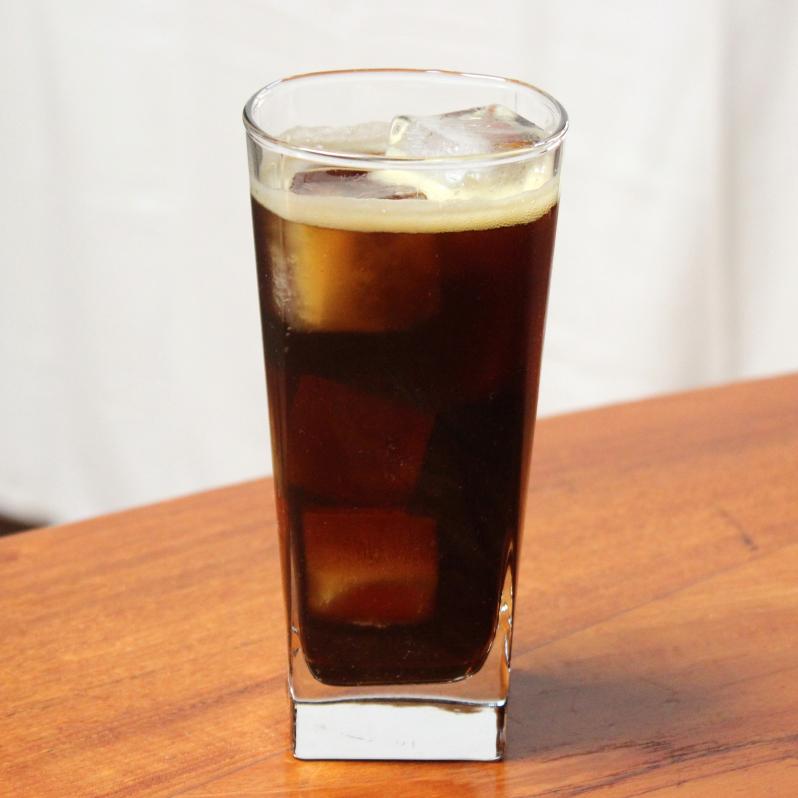
Fernet con Coca. Photo: Wikimedia Commons.
Australia
Australia exports a lot of wine but c’mon, we all know we equate Australia with beer — particularly Fosters. While Fosters is the most popular Australia beer brand world wide, it’s not the most popular in Australia.
Instead of going with the obvious Fosters beer and making a dumb joke about how it’s Australian for beer, this summer you should try to find a Victoria Bitter.
Victoria Bitter
Belgium
Belgians drink wine but they’re firmly in the middle of the beer belt of Europe and make plenty of great brews to prove it.
Two popular types of beer in Belgium are named for being brewed in monasteries: abbey and Trappist. Trappist beers thankfully have no resemblance to trap music but include the delicious Chimay variety.
Chimay Tripel
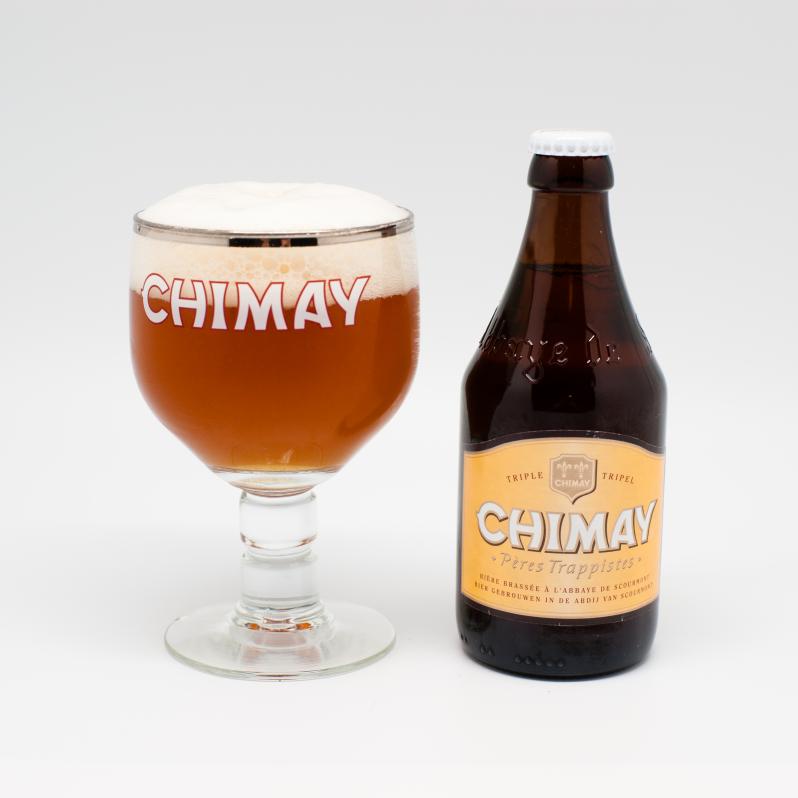
A Belgian Trappist. Photo: Wikimedia Commons.
Brazil
Brazil’s native liquor is distilled from sugar cane and called Cachaça, which just happens to be the primary ingredient in the national cocktail: caipirinha.
The caipirinha embodies Brazil’s tropical, joyful and beach-loving culture.
Caipirinha
- 2 tsp sugar
- 8 limes
- 2 ½ oz Cachaça
Instructions: Cut the limes in wedges, muddle the sugar into the lime wedges in a lowball glass, fill the glass with ice cubes, pour the Cachaça and stir well.
Colombia
Colombians love to dance and have a good time and aguardiente is the perfect liquor for Colombian parties. Distilled from sugar cane, aguardiente can be anywhere from 20 to 40 percent ABV, with most settling in around 60 proof.
Perfect for the early morning kickoff against Japan on June 19 to open the tournament is the Canelazo, a hot alcoholic beverage that includes aguardiente and cinnamon.
Canelazo
- 4 oz sugar cane aguardiente
- 4 cinnamon sticks
- 1 cup water
- 1 tsp sugar (or a chunk of panela)
- Lemon juice
Instructions: Heat water with cinnamon sticks and let boil for 5 minutes while stirring in sugar or panela, which is unrefined whole cane sugar. Simmer for three more minutes or until sugar/panela dissolves. Rim a lowball glass with lemon juice and dip it in sugar. Pour aguardiente into the glass and add the cinnamon tea along with lemon juice to taste. Serve hot.
Costa Rica
Beer is popular in Costa Rica with the eagle found on bottles of Imperial found on shirts all over the country. Hard liquors are also popular such as rum, coffee liqueur and Guaro, the latter of which is a strong liquor made from sugar cane not dissimilar from vodka.
A popular recipe for Costa Ricans is the michelada, which is simpler than the Mexican version that often includes cayenne, Tabasco sauce and/or Worcestershire sauce.
Costa Rican Michelada
- 1 fresh lime
- 1 bottle Imperial Light beer
- Sea salt
- Ice
Instructions: Use the lime to moisten the edge of a glass with lime juice. Rim the glass with sea salt. Fill glass halfway with ice. Squeeze entire lime into the glass. Serve with a full bottle of beer, to be poured at drinker’s pace.
Croatia
Croatia has lots of lovely wines and plenty of beers from both at home and abroad. If you’re looking for a Croatian beer, we suggest Ožujsko. The most popular spirit in Croatia is Maraschino, a liqueur made from, you guessed it, cherries.
While Croatian culture has a deep and rich history, the country of Croatia in its current form has only been around since 1991. It wasn’t until the last decade that the country created a national cocktail. And please don’t cringe when you see the name.

Maraschino liqueur. Photo: Wikimedia Commons.
Crocktail
- 5 cl Zadar Maraschino liqueur
- 3 cl sour cherry juice
- Fresh lemon juice
- Arancini (candied orange peel made in Dubrovnik, Croatia)
- Cherries
- Ice
Instructions: Insert crushed ice and pour the Maraschino into it. Add lemon juice and cherry juice. Garnish with Arancini.
Denmark
As is obvious from any country that could produce Lord Nicklas Bendtner, the Danes love their drink. Beer is popular as are martinis, often served with the nation’s most popular liquor: aquavit.
Aquavit, or akvavit, is derived from the phrase “water of life” and is typically 80 proof alcohol distilled from grain and potatoes and always flavored with herbs. It’s mostly consumed in Denmark and other Scandinavian countries but also popular in Germany and for some reason the American Midwest.
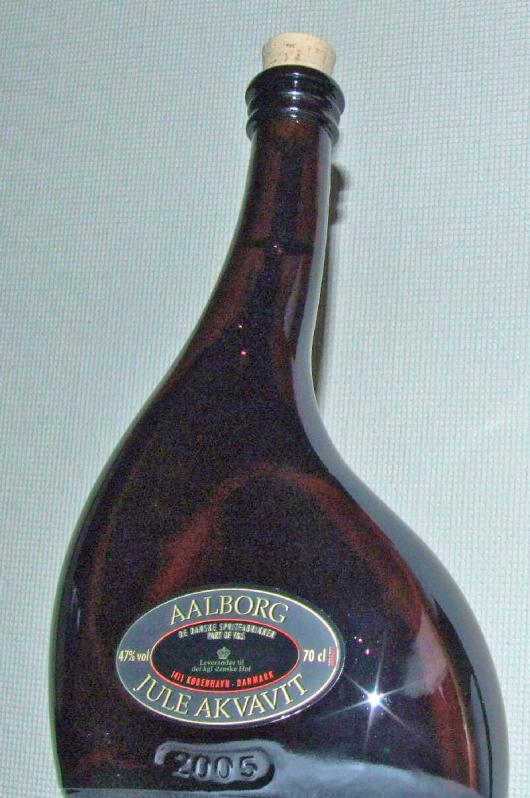
Danish Akvavit. Photo: Wikimedia Commons.
Danish Martini
- 3 oz aquavit
- ½ oz dry vermouth
- Crushed ice
Instructions: Shake ingredients with crushed ice in a shaker. Strain into a chilled cocktail glass and garnish with an olive.
Egypt
Although Egypt is a Muslim nation, alcohol is readily available throughout the country, mostly beer. A popular type of beer in Egypt is called bouza, which is made from barley and bread. Bouza has been consumed in the country for 5,000 years; the process for home brewing it is depicted on ancient Egyptian murals.
Because you probably don’t want to home brew this, here’s Luxor Weizen, a popular wheat beer brewed in Egypt.
Luxor Wiezen
England
If you just browse a list of English dishes without any knowledge of England itself you might suspect you were perusing the titles of adult films. Bangers and mash, toad in the hole, Lancashire hotpot, sticky toffee pudding and spotted dick don’t exactly wet the mouths, at least in terms of hunger, this side of the Atlantic.
Likewise English beer isn’t exactly great, at least in our esteemed opinion. But we have to give England credit (or blame) for more or less inventing the IPA, plus browns and porters. The IPA, otherwise known as India Pale Ale, was created out of necessity, formulated to last better on long voyages from England to India.
Anyway, here’s an English cocktail to make sure you forget all about the Three Lions’ miserable showing this summer. Fun bonus fact: the Queen of England reportedly drinks four cocktails a day!
Pimm’s Cup
- 1 ½ cups Pimm’s
- 1 orange, cut into thin slices
- 1 lemon, cut into thin slices
- ¾ cup firmly packed mint leaves and stems
- 1 ½ cups cold ginger ale
- 1 cucumber, cut into 8 wedges
- 3 cups ice
- 1 apple, cut into thin slices
Instructions: Combine the Pimm’s, orange and lemon slices and mint into a large pitcher and leave it to chill for 10 minutes. Then stir in ginger ale. Stand two cucumber wedges on end in each pint glass and fill it halfway with ice. Add the Pimm’s mixture and push the mint down into the drinks. Garnish with orange, lemon and apple slices between the drinks. Or scrap that and just throw all the ingredients into a jug.
France
Wine is almost synonymous with France, one of the largest producers of the beverage in the world. Many of the most popular wine grapes originated in France, like cabernet sauvignon, charonnay, pinot noir and sauvignon blanc.
Many types of wine are named after regions of France, such as Champagne. So instead of giving you a boring wine to try — and because many of these World Cup matches will be played early in the morning — we suggest you make mimosas, which were believed to have been invented in Paris in 1925.
Mimosa
- Orange juice
- Champagne
Instructions: Just pour champagne into a flute filled with orange juice to taste. Nothing complicated here.
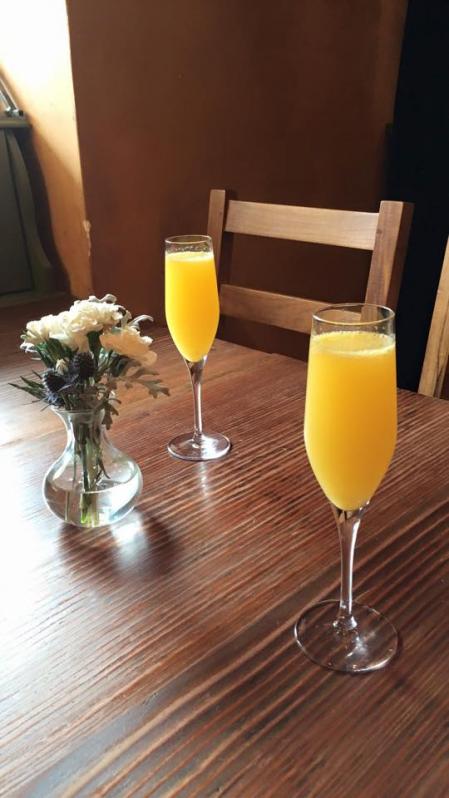
Mimosa, sorta French. Photo: Wikimedia Commons.
Germany
Germany is pretty synonymous with beer and many varieties get their origins from German locales, such as Kolsch, Berliner Weisse and Leipziger Gose.
Beer in Germany is regulated by Reinheitsgebot, which is a law more than 500 years old. While there are a number of quality beer types that come from Germany, including weizenbier, hefeweizen, helles and bock, we’re going to suggest to you a Märzen, because that’s what you expect at Oktoberfest and because Pep Guardiola looks adorable in lederhosen.
Paulaner Oktoberfest Märzen
Iceland
Iceland is going to have a large hipster fan following this summer and distillers in the country recognize this. Just check out this ad from Reyka, an Icelandic producer of vodka.
.@notthefakeSVP We hear you are looking for a football team to support this summer! Might we suggest Team Iceland? #USAforIceland pic.twitter.com/m4qihGsgU1
— Reyka Vodka (@ReykaVodka) May 14, 2018
But Iceland’s signature liquor is Brennivín, which is similar to the aforementioned aquavit. The word literally means “burnt wine” and it’s distilled from grain or potatoes and flavored with caraway. Brennivín is typically served cold in a shot glass along with hákarl, fermented shark meat. Because we doubt you have any fermented shark meat lying around (it smells awful), try this recipe instead.
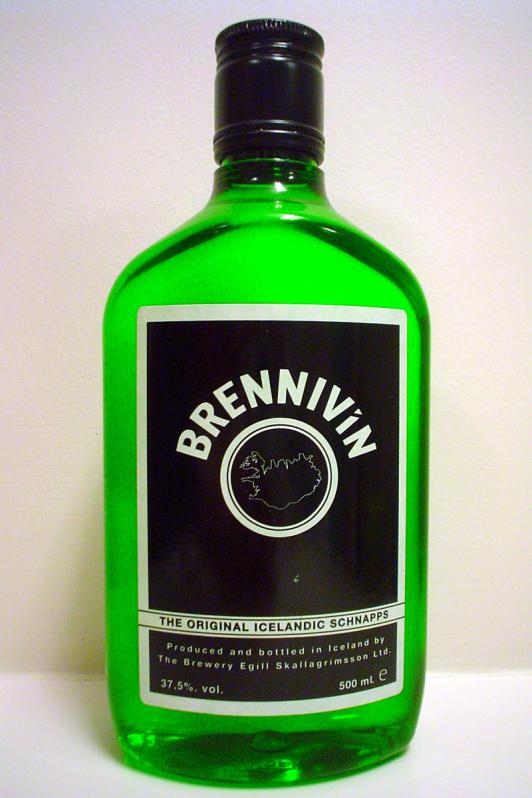
Icelandic Brennivín. Photo: Wikimedia Commons.
Cran-Brennivín
- 1 ½ oz Brennivín
- 1 oz cranberry juice
- ½ oz fresh lemon juice
- ¾ oz simple syrup (sugar cut with an equal part hot water)
Instructions: Combine all ingredients with ice in a cocktail shaker, shake them up and strain into a rocks glass and garnish with a lemon.
Iran
Iran is a major consumer and producer of tea. Despite its Muslim roots, Iran has alcoholic beverages in its culture. The most popular component of Iran booze is Shiraz, a wine that originated from the Iranian city of the same name. However, the shiraz you drink today probably has no relation to the Shiraz from Iran, as the red produced in South Africa and Australia is based instead on the Syrah grape from southeast France.
However, there is a popular liquor in Iran called Aragh Sagi, which translates to “Doggy Distillate.” We’re not sure if that name is gross or awesome. Aragh Sagi is basically moonshine, containing anywhere from 40 percent to more than 60 percent ABV. It’s often called Persian vodka.
While you can mix Aragh Sagi with just about anything, if you can find a bottle of arak we suggest you mix it with Diet Coke because that seems like a perfect way to blend American and Iranian culture, because the World Cup is all about homogenizing the world bringing everyone together.

An old bottle of Aragh Sagi. Photo: Wikimedia Commons.
Arak and Diet Coke
- 1 ½ oz Aragh Sagi
- 12 oz can of Diet Coke
Instructions: Let's be real; you know how to make this. Just pour both over ice and add more or less Aragh Sagi as desired.
Japan
The Japanese love their beer, particularly lagers, and brewers such as Asahi, Kirin, Sapporo and Suntory dominate the market. But Japan is also well known for its sake, sometimes referred to as rice wine even though it’s fermented more like beer.
Sake typically contains about 20 percent ABV and can be served chilled, hot or room temperature. It’s almost always consumed straight. While we could bro out and tell you to do sake bombs, we’re not in college anymore and will instead provide you with this sophisticated cocktail recipe.
Zucchini Sake
- ¼ cup zucchini water
- 2 tbsp lemon simple syrup
- ¼ cup sake
Instructions: To create the zucchini water, wash and shred two zucchinis, place in a cheesecloth and squeeze the juices into a cup. Add the zucchini water, lemon simple syrup and sake into a cocktail shaker with ice to mix. Pour over ice and garnish with more zucchini.
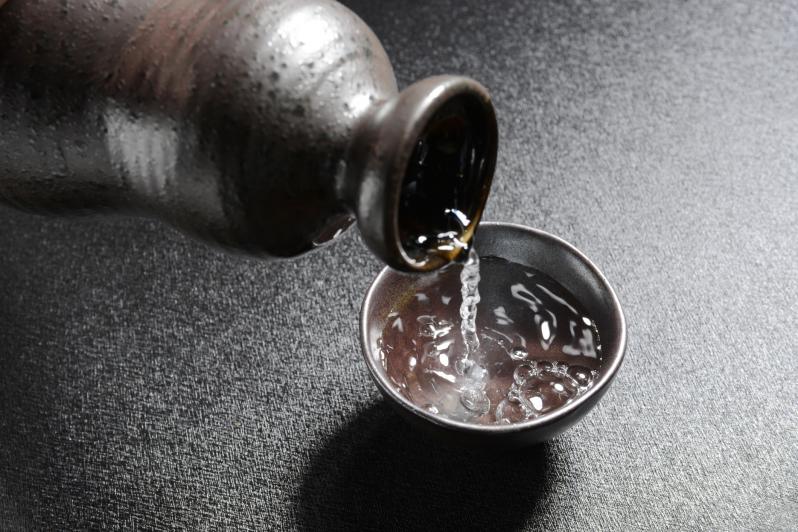
More than likely you’ll just want to drink sake straight like this. Photo: iStock.
Mexico
As Americans love to celebrate in the first week of May every year, Mexico has plenty of great alcoholic beverages to consume. Americans can’t get enough of cervezas and tequila.
But let’s be honest, you already know we’re going to give you a margarita recipe. The key to a good margarita (and really, any good cocktail) is using only the freshest of ingredients, even if that means squeezing your own lemons or shredding a god damn zucchini (see directly above).
Margarita
- 6 units tequila
- 3 units triple sec
- 2 units agave syrup
- 3 units lime juice
Instructions: Combine ingredients, mix with ice (preferred in a blender but crushed ice works too). Make it seven units of tequila if Mexico is actually playing. Salt the rims of the glasses if desired but who’s got time for that when there are matches to watch?
Morocco
Mint (green) tea is the most popular drink in Morocco. Because it is a Muslim country, most Moroccans do not consume alcohol. But because tourism is such a large part of the nation’s GDP, alcohol laws are fairly liberal for non-Muslims.
Popular beers in Morocco include Speciale Flag, Stork and Casablanca, the latter of which is exported out of the country. But because mint tea is so popular, we’d like to give you a World Cup cocktail based on that.
Moroccan Mint Tea
- 15 whole mint leaves
- 2 cups sweetened ice tea
- 1 splash Rose’s Lime Cordial Mixer
- 1 cup vodka
Instructions: Add ice and mint leaves to a cocktail shaker and shake to bruise the leaves. Add remaining ingredients and shake. Pour into highball glasses and garnish with lime.
Nigeria
Many portions of Nigeria are under Shari’a law, which carries harsh sentences for alcohol consumption. Instead, kunu is popular in those areas. It’s made from grains such as millet or sorghum and I’m sure your mouth is already watering.
One of the few alcoholic beverages popular in Nigeria is palm wine, which is made from the sap of palm trees. Palm wine tapping has a place in Chinua Achebe’s brilliant novel “Things Fall Apart” and is central to fellow Nigerian author Amos Tutuola’s “The Palm Wine Drinkard.”
Palm Wine
Panama
Like many Central and South American nations, the national drink of Panama is distilled from sugar cane. Seco is traditionally taken straight or in mixed drinks that would commonly use rum or vodka and is about 35 percent ABV.
Given its location and climate, Seco is often mixed with tropical fruits, though some parts of the country drink it with milk or coconut milk.
Chichita Panama
- 1 oz seco
- 1 oz fresh pineapple juice
- 1 oz fresh grapefruit juice
Instructions: Pour seco into a glass with ice and add the fresh juice to top it off.
Peru
Pisco is the national drink of Peru and the pisco sour is Peru’s gift to the alcoholics of the world. Pisco is a brandy distilled by fermenting grape juice and began as an alternative to the Spanish orujo in the 1500s. Pisco gets its name from the coastal city of the same name.
A pisco sour, at least when made in the Peruvian way instead of Chilean, includes Key lime juice, simple syrup, egg whites and bitters.
Peruvian Pisco Sour
- ¾ oz lemon juice
- 1/3 egg white
- 4 drops Angostura Bitters
- ¼ oz sugar syrup
- 2 oz pisco
- Ice cubes
Instructions: Shake all of the ingredients with ice and strain into a cocktail glass. Garnish with a lemon slice.
Poland
Poland is the start of the vodka belt in Europe and lives up to its name with plenty of the liquor. However, beer has a rich history in Poland as well and is the most popular alcoholic beverage in the country.
But because we also have Russia and Germany in this list, we want to focus on mead, a beverage created by fermenting honey with water. Miod pitny is Polish mead and has a history dating back thousands of years. Apologies in advance because the below recipe isn’t exactly a World Cup cocktail and will take five years to make.
Miod Pitny
- 20 tbsp honey
- 10 l water
- 1 cup hops (dry)
- 1 tbsp juniper berries
- 8 tsp yeast (of wine)
Instructions: Pour the honey and then water in a large pot and bring to a boil, stirring constantly. Put the hops and juniper berries into a cheesecloth bag and drop them into the boiling mixture. Add the yeast, mix well and pour the liquid into a carboy. Cork the bottle and allow it to sit for three weeks. Strain the mead into another carboy and keep it at the same temperature for about three months. Decant the liquid again and put it into an oak barrel. For the strongest mead, leave it in the barrel for up to five years.
(Or you can just buy mead.)
Polish Miod Pitny. Photo: Wikimedia Commons.
Portugal
While it’s not hard to find beer or other spirits in Portugal, there’s no doubt the nation is best known for its wine. In fact, two wine-producing regions of the country are protected as World Heritage sites: Douro Valley and Pico Island.
Port wine is of course the most popular, coming from Douro Valley but getting its name from the city of Porto, which exports the beverage. It’s a sweet red wine that often accompanies dessert. No need to mix this into a World Cup cocktail.
Port
Saudi Arabia
Saudi Arabia is a Muslim nation that forbids alcohol throughout the country, unlike Morocco and Iran, the latter of which only forbids it for Muslims. Coffee and tea are both extremely popular in Saudi Arabia, as well as some fruity drinks.
While there are no real bars in the country, there are bars in some hotels that will serve beers and cocktails without alcohol. Foreigners living in Saudi Arabia often go to extreme measures to get alcohol, often home brewing it themselves, but for the most part drinking isn’t a part of the country’s culture. However, alcohol-free Saudi Champagne can be found in many restaurants and is served on special occasions.
Saudi Champagne
- 80 ml apple juice
- Soda water
- Oranges
- Apples
Instructions: Fill a highball glass with orange wedges and apple slices. Pour the apple juice first and then complete with soda water. Garnish with mint.
Enjoying a Saudi champagne! pic.twitter.com/DYuuSb4Hfa
— Matt Brooke-Smith (@lordmatty) March 8, 2018
Senegal
Another predominantly Muslim nation, alcohol is not common in Senegal. Fresh juices, toufam, mint tea and coffee are popular.
Palm wine is sometimes drunk twice a day and is the most popular alcoholic beverage in Senegal. Jus de Bissap is a non-alcoholic mixed drink that can also be served with seltzer water, ginger ale or lemon-lime soda.
Jus De Bissap
- 2-3 cups dried hibiscus flowers (sorrel or roselle)
- 1-2 cups sugar
- 1-2 mint sprigs
- ½ tsp vanilla extract
- ½ tsp ginger (grated fresh root)
- 1 tsp Orange Flower Water
- ½ cup lemon juice
- 1 cup pineapple juice (or orange juice)
Instructions: Rinse dried flowers in cool water, heat two liters of cold water in a saucepan and add the leaves once the water begins to boil. Immediately remove from heat and let flowers steep for 10 minutes. Strain into a pitcher using a cheesecloth or paper towel. Stir in sugar and add remaining flavorings as desired. Add ice and chill, serve over ice. Cranberry juice can replace the dried hibiscus flowers for a more simplified recipe.
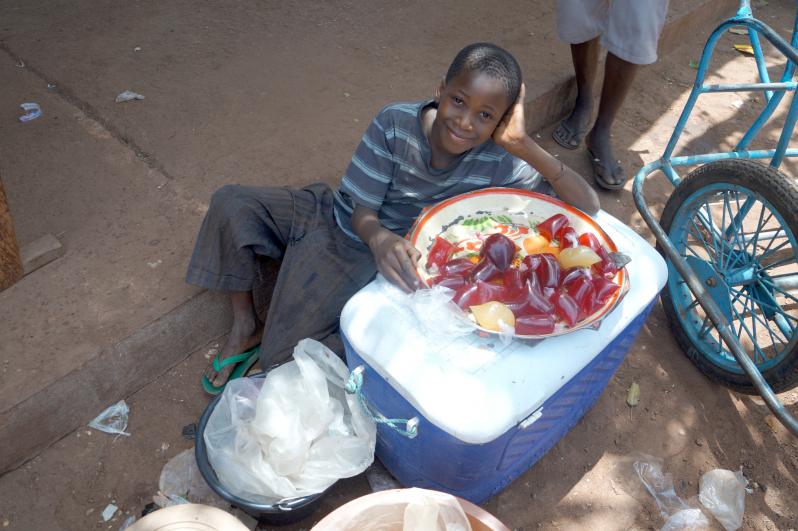
Jus de Bissap. Photo: Wikimedia Commons
Serbia
Turkish coffee is the most common non-alcoholic beverage in Serbia while yogurt and kefir are also popular dairy drinks. But you’re here for the booze, right?
Beer and wine are both widespread but the national drink of Serbia is Šljivovica, a rakija made from plum — basically plum brandy. Rakija, or rakia, is a catch-all term for fruit brandy in this part of Europe, typically with an ABV in the range of 40-50 percent. Like plums, Šljivovica, or Slivovitz, is deeply ingrained in Serbian culture (and even the Serbian Orthodox religion) and is often homebrewed.
Plum Cocktail
- 1 fresh plum
- 2 oz Slivovitz
- ¼ extra dry vermouth
- ¼ sugar syrup (2 sugar to 1 water)
Instructions: Cut plums into quarters, remove stone and peel. Muddle plum in base of shaker. Add other ingredients. Shake with ice and strain into a chilled glass.
South Korea
Korea is home to an estimated 1,000 kinds of alcoholic beverages, most of which are made from rice. Rice wines, fruit wines and beer are all consumed.
The most popular alcoholic drink in South Korea is soju, a clear liquor made from rice, though wheat, barley and even potatoes can be used to make it. Soju is almost always taken neat (served unmixed at room temperature). But soju can be mixed to create somaek, a word that combines soju with maekju, the Korean word for beer.
Somaek
- Soju
- Beer
Instructions: Mix at leisure. Ratios vary widely depending upon preference, from 9-1 beer to soju for a smooth and gentle drink to 5-5 for a surefire way to get drunk.
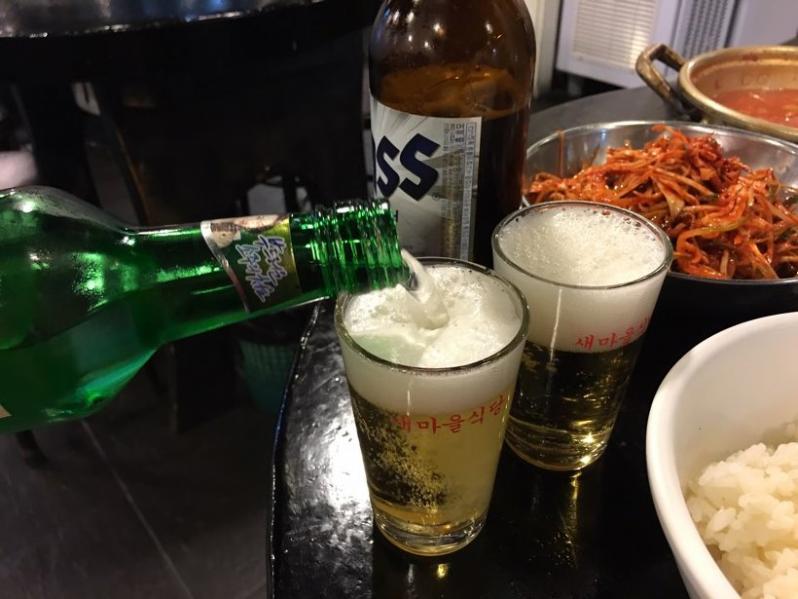
Korean Somaek. Photo: Wikimedia Commons.
Spain
Though it’s one country, Spain has a diverse cuisine. While wine is the most pervasive alcoholic beverage, there is still plenty of variation including beers and spirits such as orujo, anise, Cantueso, Herbero and Pacharan.
Spain is the world’s third-largest wine producer after France and Italy and we definitely suggest a good Spanish red from Rioja, which you should throw into the following World Cup cocktail.
Sangria Española
- 48 oz Spanish dry red wine
- 1/3 cup orange juice (fresh squeezed)
- ¼ cup Grand Marnier
- 2 tbsp sugar
- 2 cups club soda
- Ice cubes
Instructions: Mix the wine, juice, Grand Marnier and sugar in a large pitcher. Cover and refrigerate for at least several hours or overnight. Before serving, add club soda and plenty of ice. Garnish with orange, lemon, peach or apple slices or just throw the fruit into a punch bowl.
Sweden
While Sweden drinks more coffee than just about anyone else, the Scandinavian country has plenty of booze too. Considered as part of the vodka belt, vodka and other spirits are quite common, including schnapps and aquavit. A state monopoly called Systembolaget controls most alcohol.
Like Iceland, Sweden’s specialty is brännvin (also meaning burnt wine like the Icelandic Brennivín but in the Swedish language). Vodka is considered the highest grade of brännvin and Absolut Vodka is known worldwide.
Swedish Polar Bear
- 2 oz Absolute Vodka (can be raspberry flavored)
- 1 oz Blue Curaçao
- 1 splash of Sprite
Instructions: Pour vodka and Blue Curaçao into a highball glass full of ice, stir and complete with Sprite. Then pretend to be Zlatan.
Switzerland
Switzerland is heavily influenced by its neighbors Germany, France and Italy. Thus, Switzerland has plenty of beer and wine. Damassine is a popular plum liqueur while pear brandy is also popular.
Absinthe originated in Switzerland. The highly alcoholic drink (45 to 74 percent ABV) is usually diluted by water before drinking, often poured over a sugar cube.
Classic Swiss Absinthe
- 2 oz absinthe
- 2-3 drops anisette liqueur
- 23 drops orange flower water
- 1 tbsp White Crème de Menthe
- 1 whole egg
- Crushed ice
Instructions: Shake all ingredients with crushed ice and serve in a cocktail glass.
Tunisia
Our final Muslim country on this list, Tunisia is a bit more progressive than other Muslim nations; alcohol is available in some restaurants, resort areas and certain shops.
Celtia is a popular local beer in Tunisia while local Tunisian wine can hold its own given the country’s history and proximity with France. Boukha is a Tunisian brandy made from figs.
Bouka Pomegranate Fig Smash
- 1 oz boukha
- 1 oz fresh lemon juice
- ½ oz grenadine
- Ground cardamom (for garnish)
- Mint sprig (for garnish)
- Pomegranate seeds (for garnish)
Instructions: Combine boukha, lemon juice and grenadine in a shaker with ice. Shake vigorously and strain into a rocks glass filled with crushed ice. Sprinkle cardamom and garnish with mint and pomegranate seeds.
Uruguay
Like nearby Argentina, mate is popular in Uruguay, as is wine. One popular drink is clericó, which is a mix of wine and fruit juice.
In terms of spirits, caña is similar to aguardiente and the many drinks involve grappa, a liquor distilled from pomace left over from winemaking. In Uruguay it’s often mixed with lemon (grappa con limon) or honey (grappamiel).
But wine and whiskey reign supreme, with the former especially popular in the summer.
Wine and 7 Up
- Wine
- 7 Up
Instructions: Mix as strong or as light as you like based on what Luis Suarez is up to. Can also use Coke instead of 7 Up.
United States
Shush! Yes, we know the U.S. didn’t qualify. But we’re watching the World Cup from the U.S. so we need a drink as well. And something to help numb the pain of not qualifying.
So for the U.S. we’re going with the classic Bloody Mary, because we’re watching most of this tournament in the morning and it’s slightly more appropriate to drink liquor before noon when it’s mixed with juice for some reason.
Bloody Mary
- 3 cups tomato juice
- 3 tbsp lemon juice
- 3 tbsp lime juice
- 1 tbsp prepared horseradish
- 1 ½ tbsp Worcestershire sauce
- ¼ tsp garlic powder
- ¾ tsp Tabasco sauce
- ¾ tsp celery salt
- ½ tsp coarse black pepper
- 1/3 cup pickle juice
- 1 oz vodka, per drink
Instructions: Combine the tomato juice, lemon juice, lime juice, horseradish, Worcestershire sauce, garlic powder, pickle juice and Tabasco in a blender until smooth. Move to another container and add celery salt plus black pepper to taste. Refrigerate until chilled, probably about 2 hours or overnight. To serve, fill each glass with ice, add 1 oz of vodka then fill glass with Blood Mary mix and stir well. Garnish with celery or other veggie of your choosing.
Again, standard disclaimer: Don’t be a twat; drink responsibly.


